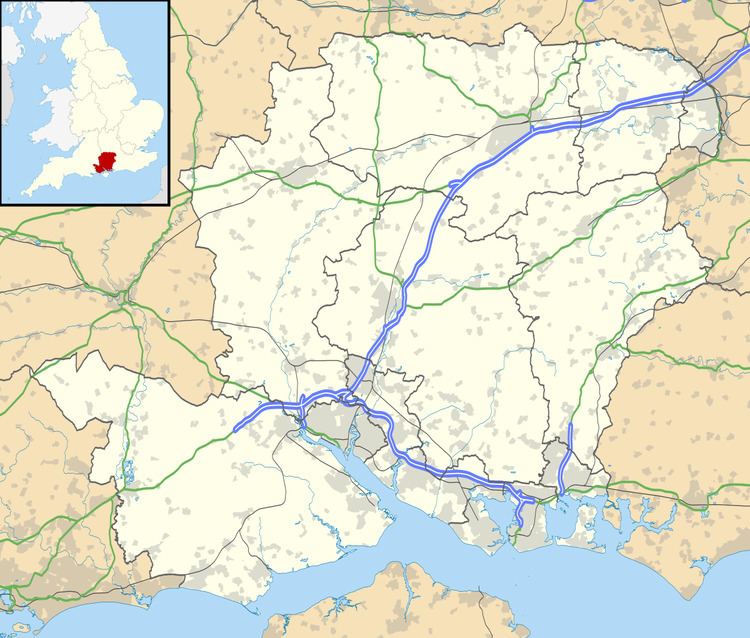Grid reference SU417224 | Interest Biological Notification 1989 | |
 | ||
Trodds Copse (grid reference SU417224) is a 25.23 hectare biological Site of Special Scientific Interest (SSSI), in central Hampshire, notified in 1989. It comprises ancient semi-natural woodland, unimproved meadows and flushes.
Contents
Location
The copse is situated to the north-west of Chandler's Ford between Flexford Road and Hook Road and adjoins the Eastleigh to Romsey railway line.
Description
The citation for the SSSI says:
Trodds Copse Site of Special Scientific Interest comprises ancient semi-natural woodland, unimproved meadows and flushes overlying Bracklesham Beds, Bagshot Sand, peat and alluvium. The habitats are drained by tributaries of the Monks Brook, a branch of the River Itchen. The diverse geology and varied drainage conditions give rise to a wide range of habitats. At least ten woodland types can be identified, of which four are considered nationally rare. The diversity of woodland types is matched by an extremely rich ground flora. The antiquity of the woodlands is reflected in the very high number of ancient woodland indicator species recorded within the site. Over fifty such species occur, including a number of rare or local plants such as tutsan (Hypericum androsaemum) making it one of the botanically richest woods in Hampshire.
History
Trodds Copse and surrounding land has been well documented since the late 16th century. The whole site was enclosed from common land prior to 1588 and woodland boundary banks can be clearly discerned. Some areas were managed as wood pasture but by the early 19th century this practice had ceased, the land being converted to pasture or coppice woodland.
The site is threatened by the north-westerly expansion of Chandler's Ford. In 1990, a planning application to build 200 houses and a golf course at neighbouring Broadgate Farm, Ampfield was refused as it "would result in the destruction of part of the Trodds Copse Countryside Heritage Site".
Flora
Among the many tree and plant species found at Trodds Copse are:
Fauna
The wide range of habitats is reflected by the diverse invertebrate fauna present within the site, including:
